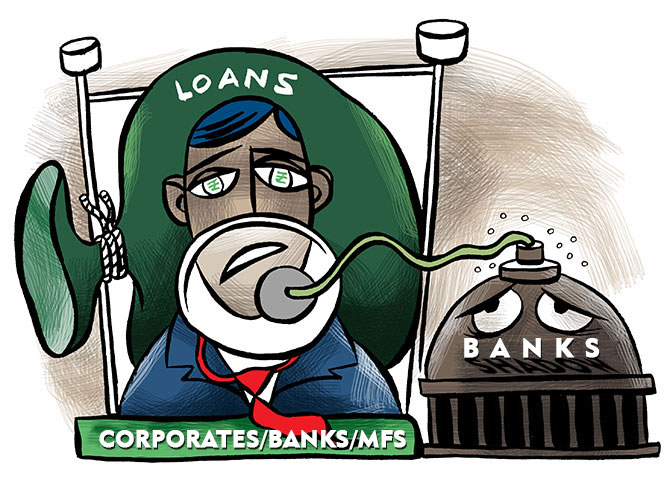 | « Back to article | Print this article |
The bi-annual financial stability report noted that failure of an NBFC with the maximum capacity to cause solvency losses to the banking system will lead to a loss of 2.5 per cent of the total tier-I capital of the banking system.

The Reserve Bank of India (RBI), in its financial stability report (FSR) 2019, said that stress tests showed that around 8.6 per cent of individual non-banking financial companies (NBFCs) will not be able to comply with the minimum regulatory capital requirement of 15 per cent.
Also, around 14.2 per cent of the companies will not be able to comply with the minimum regulatory capital to risk (weighted) assets ratio (CRAR) norms.
The bi-annual financial stability report noted that failure of an NBFC with the maximum capacity to cause solvency losses to the banking system will lead to a loss of 2.5 per cent of the total tier-I capital of the banking system.
Failure of a housing finance company (HFC) with the maximum capacity to cause solvency losses to the banking system will lead to a loss of 4.6 per cent of the total tier-I capital of the banking system.
In either case (in the current scenario), that is, NBFC or HFC failure, no additional bank will fail.
This is an improvement in the last six months. In June’s FSR, the RBI stated that the failure of an HFC will lead to a loss of 5.8 per cent of the total tier-1 capital of the banking system and the failure of one bank.
The failure of an NBFC will lead to a loss of 2.7 per cent of the total tier-1 capital and the failure of one bank.
The gross NPA ratio of the NBFC sector increased from 6.1 per cent as on end-March 2019 to 6.3 per cent as on end-September 2019.
The net NPA ratio, however, remained steady at 3.4 per cent between end-March 2019 and end-September 2019.
As at end-September 2019, the CRAR of the NBFC sector stood at 19.5 per cent, lower than 20 per cent as on end-March 2019.
While commenting on exposure of the financial sector to NBFCs, the RBI noted that NBFCs were the largest net borrowers of funds from the financial system with gross payables of around Rs 8,29,468 crore and gross receivables of around Rs 66,635 crore as on September 2019.
A break-up of gross payables indicates that 48.4 per cent of the funds were obtained from Scheduled Cooperative Banks (SCBs) followed by 26 per cent from AMC-MFs and 21.3 per cent from insurance companies.
The share of SCBs, which had increased during FY 2018-19, registered a moderate decline in H1: 2019-20.
Share of AMC-MFs has been on a declining trend since the last few quarters.
Following NBFCs, HFCs were the second largest borrowers of funds from the financial system with gross payables of around Rs 5,90,039 crore and gross receivables of only Rs 33,110 crore as on September 2019.
Share of AMC-MFs in providing funding to HFCs came down sharply last year, only registering a marginal increase in Q2FY20.
In contrast, the relative share of SCBs showed an upward trend, but dipped in September 2019 to 40.9 per cent from 43.9 per cent in June 2019.